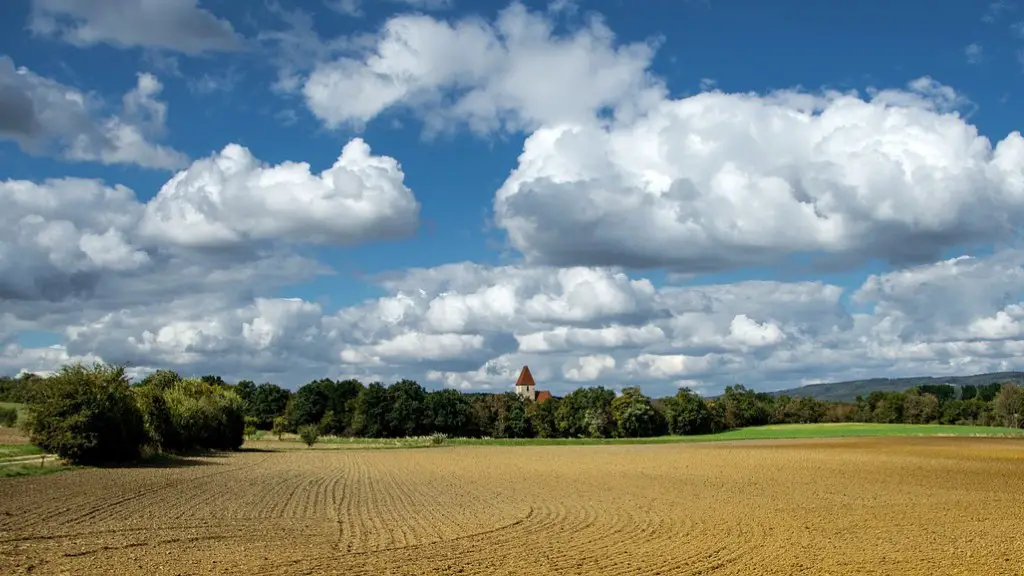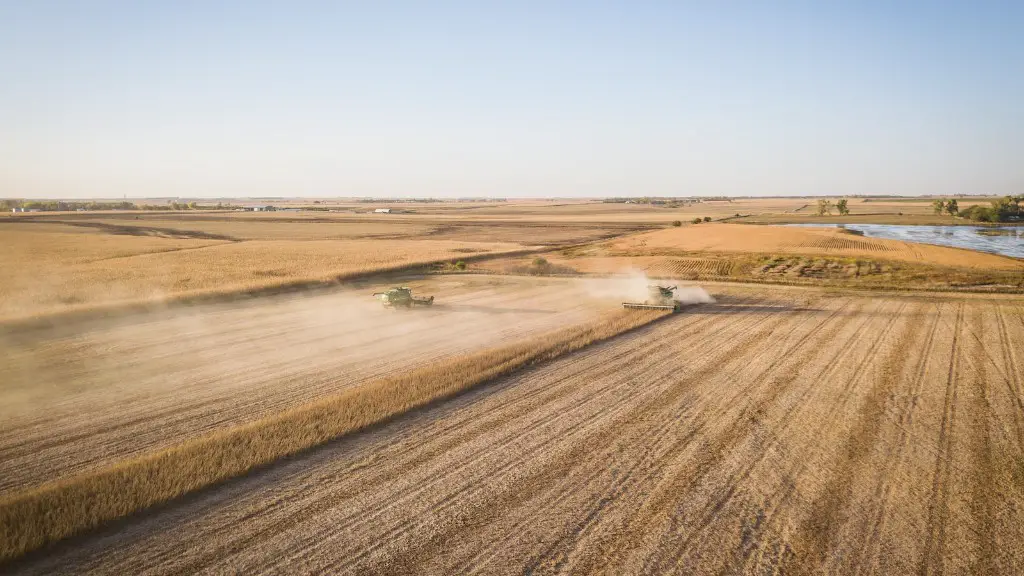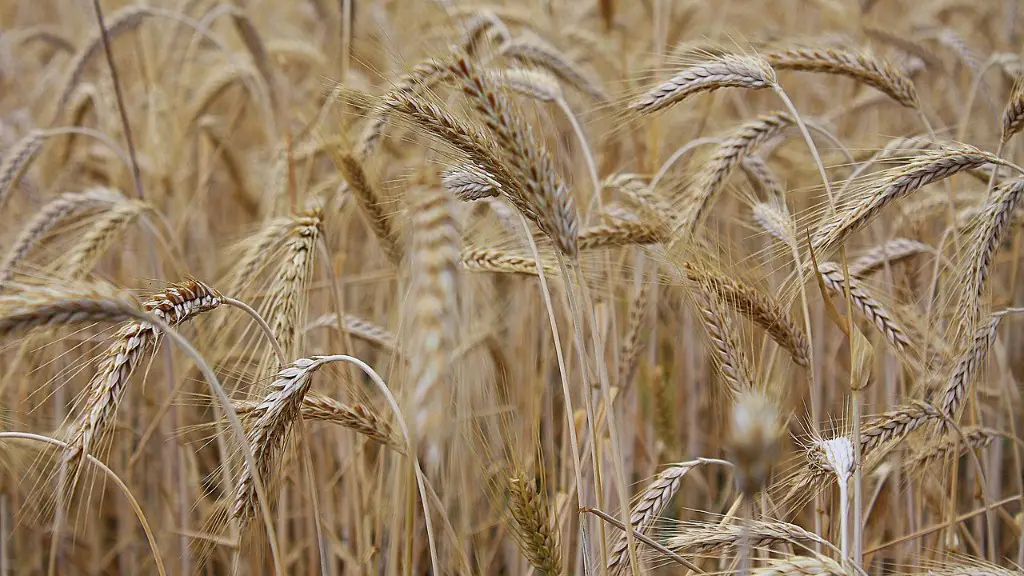It is well known that as a population grows and becomes more concentrated in an area, that area is said to become more “urbanized.” As population centers continue to urbanize, the amount of agricultural land that is available can decrease. This is due to a variety of reasons, such as the amount of available land for farming decreasing as developed land grows, the cost of land for farming becoming more expensive as demand for land in and around cities increases, and the amount of arable land being converted to other uses such as parks or golf courses.
These factors can have a definite impact on the amount and type of agriculture that can be conducted in and around urban areas. Large-scale commercial farming operations can become difficult to maintain, while at the same time the cost of fresh fruits and vegetables can increase for city dwellers. In some cases, community gardens and other forms of urban agriculture have become popular as a way to combat these effects and provide city residents with access to fresh, locally-grown produce.
The main ways that urbanization affects agriculture are:
-The increased demand for land and water for housing, industry and infrastructure reduces the amount of land and water available for agriculture.
-Pollution from urban areas can contaminate land and water resources used for agriculture.
– Urbanization can lead to the loss of agricultural lands to other uses.
– The increased demand for food from urban areas can put pressure on farmers to increase production.
What are some of the challenges of urban agriculture?
The challenges of urban farming are many and varied, but perhaps the most significant is the issue of resource scarcity. In cities, resources like water, land, and labor are all in short supply, and this can make it difficult to sustain a successful urban farm. Additionally, environmental contamination is a serious concern in cities, and this can pose a serious threat to the success of urban farms.
It is clear that urbanization has the potential to impact water use in agriculture. As urbanization encourages the large-scale intensive use of rural land, it is easier to adopt community-based water-saving technologies. This could improve AWE. Additionally, as urbanization has the potential to increase agricultural technology levels, it is likely that AWE would also increase.
What are 5 effects of urbanization
Urbanisation has lead to the development of slums as people move into cities in search of work and a better life. However, living in slums can be extremely difficult and dangerous, with poor sanitation and water conditions leading to health problems. Traffic congestion is also a major issue in cities, making it difficult to get around and causing pollution.
The above mentioned changes in land use patterns have brought about changes in crop-livestock farming system which dominates in South Asia. This has resulted in an increase in the share of non-producer, decline in agricultural land and increase in food prices. These changes have put pressure on the livelihoods of rural as well as urban poor.
How did urbanization affect the local farmer?
Urbanization results in an increase in the total cropland area and a decrease in the rural population. This results in a higher per-capita cropland area for rural residents and, therefore, increased farm size.
Urbanization can have a negative impact on the environment, causing deforestation, habitat loss, and the extraction of freshwater from the environment. This can decrease biodiversity and alter species ranges and interactions.
What is the disadvantage of urban agriculture?
Water shortages can be created by over-usage of the public water supply for farming in urban areas. This is especially a problem in places with a dense population. Extreme shortages can result from this overuse of the water supply.
As the world urbanizes, more and more people are moving into cities. This results in a number of challenges, including increased pressure on resources, degraded environments, and worsening conditions for the urban poor. These issues are compounded by wars and natural disasters that disrupt food supplies from rural areas. In response to these challenges, many communities are working towards sustainability, recognition of environmental limitations, and improved conditions for the urban poor.
What are 4 disadvantages of urbanization
As the world’s population continues to grow, the problems of poor air and water quality, insufficient water availability, waste disposal, and high energy consumption are becoming more and more exacerbated in urban areas. This is due to the fact that as population density increases, so do the demands on limited resources. It is therefore becoming increasingly important to find ways to sustainably manage these resources in order to protect the environment and human health.
While there are many positive effects of urbanization, there are also negative effects that must be considered. Poor nutrition, pollution-related health conditions, communicable diseases, and poor sanitation are all problems associated with urbanization. These problems must be addressed in order to improve the standard of living for those living in urban areas.
What are the negative and positive impact of urbanization?
Urbanisation has many positive and negative effects. The positive effects include economic development and education. However, urbanisation also places stresses on existing social services and infrastructure. Crime, prostitution, drug abuse and street children are all negative effects of urbanisation.
Urban agriculture can have a number of benefits for the surrounding community. It can reduce transportation costs, help reduce runoff associated with heavy rainfall, and lead to better air quality. Urban farming can also provide fresh produce to local residents, which can improve their overall health. Additionally, urban agriculture can create jobs and provide educational opportunities for the community.
What is a negative effect of urbanization
As our cities continue to grow and become more populated, it’s important to be aware of the potential health problems that can arise as a result of urbanization.Poor nutrition, pollution-related health conditions, communicable diseases, poor sanitation and housing conditions can all become major problems in an urban environment. It’s important to be aware of these issues and take steps to protect our health.
One of the most serious impacts of urbanization is air pollution. In cities, there is a high concentration of vehicles and industries, which release harmful pollutants into the air. These pollutants can cause a range of health problems, including respiratory infections, heart disease, and cancer.
What are the 6 environmental impacts of urbanization?
Uncontrolled urbanization in India is causing environmental degradation at an alarming rate. This degradation is causing many problems such as shortages of housing, worsening water quality, excessive air pollution, noise, dust and heat. The problem of disposal of solid wastes and hazardous wastes is also becoming increasingly critical.
There is a growing body of evidence that suggests that development policies and programmes have become increasingly biased against rural areas and rural people. This paper studies the causes and manifestations of this “urban bias,” including discrimination in domestic pricing policies and in the international trade regime, decreasing financial support from LDC governments and aid donors, and increasing neglect of agriculture in development theory and economic research.
The evidence collected in this paper suggests that the urban bias is a major cause of rural poverty and underdevelopment, and that it is likely to continue or even increase in the future unless policies and programmes are specifically designed to address it. The paper concludes with a series of policy recommendations for reducing the urban bias.
Warp Up
In general, urbanization has a negative effect on agriculture. The main reason for this is that urbanization requires the use of large amounts of land, which often results in the conversion of agricultural land to other uses. This can lead to a decline in the amount of land available for agriculture and a decrease in agricultural production. Additionally, urbanization can lead to a change in the type of agriculture that is practiced in an area, as well as to a decline in the quality of agricultural land.
The loss of agricultural land to urbanization is a major challenge facing the agriculture industry. According to the National Resources Conservation Service, the amount of farmland in the United States declined by more than 2.2 million acres between 1992 and 1997. This trend is expected to continue as the population continues to grow and more land is developed for homes, businesses, and other non-agricultural uses. The loss of agricultural land not only reduces the amount of land available for farming, but also adversely affects the agricultural industry in other ways. For example, when farmland is converted to other uses, the Agricultural Conservation Easement Program (ACEP) or other conservation programs may no longer be able to protect the remaining agricultural land from development. In addition, the conversion of farmland to other uses can also lead to the loss of important agricultural amenities, such as rural vistas and open space, which can decrease the value of agricultural property and make it less attractive to farmers and ranchers.





